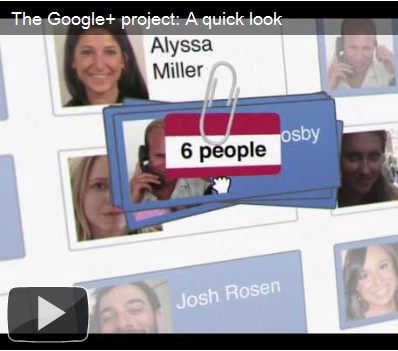“In a world that is moving from PC-centric to a world completely mobile, it’s hard to keep up,” wrote Owen Greaves in a recent post. Owen is a Futurist, who loves making this paradigm shift less painful when it comes to media and commerce on the Internet.
 While many people may say that the world’s problems come from a lack of education, Owen states that this is a Listening problem:
While many people may say that the world’s problems come from a lack of education, Owen states that this is a Listening problem:
The listening problem comes from an insecurity in my humble opinion, business owners don’t want to look stupid, or be seen as if they don’t know what’s happening in their business and or around them.
I can only tell you this, it is impossible for any one person to know everything there is to know about everything, including your business.
If you are a business owner, try to listen more, grow bigger ears, and then turn your business into a platform that people will find useful. People always return to what is useful. And become a likeable, lovable brand.
Owen and I met online two years ago when I was just beginning my journey, and we was one of the the Experienced Ones. It was on the site Friendfeed, which had been highly touted [at the time] by Robert Scoble, who spoke to my marketing classes at San Francisco State.
I’d been trying out that platform when I stumbled upon Owen, who must have seen Robert comment on something I’d written. At the time, I didn’t really understand the significance of that.
So Owen and I became “friends” on Friendfeed. One day I asked a question, and Owen simply “liked” it. I posted back, “Why did you LIKE my question and not Answer it?” And here is the answer which should help a lot more newbies out there:
When someone “likes” what you have posted, then their entire network gets to see that post. You don’t even have to comment or answer, all you have to do is LIKE, i.e., the Power of Liking.
So . . . that was helpful.
So . . . I started to follow Owen more and more, especially on Twitter, which had just started to explode in 2009. Of course, I like lots of other Twitter newbies, at first thought Twitter was Stupid — Who wants to know where you went out to eat? Well, actually, after I got to know Owen online, then when I’d see him post something like dining out or speaking somewhere or attending a conference, I could “engage” with him, and let him know I was listening.
Owen has been a continued online supporter, and now he’s even joined the gallery on our Facebook group for the students in my online course Social Media for Journalists. I’ve wanted to interview Owen for ages, so Students, Subscribers, and New Readers:
Here’s Owen Greaves
 1. Explain your “love” for Twitter . . . and can you give some advice to small business people on why they are missing out by not understanding and using Twitter.
1. Explain your “love” for Twitter . . . and can you give some advice to small business people on why they are missing out by not understanding and using Twitter.
Owen: I love Twitter!
Mostly Twitter fills the need for real-time responses, research, and website traffic.
Twitter acts as a broadcasting channel, but also as a place to do research. TNN = Twitter News Network,
I can search for any keyword in http://search.twitter.com and find results, I can finetune those results as well.
The biggest reason I love Twitter, relationships.
I have met more incredible people on Twitter than I have in my entire life shaking hands, and I have met a lot; I’m 53 years old so I’ve been around.
The best piece of advice I can give is this [and this holds true for all Social Media Networks]:
You can’t have a Social Media Presence and not be present.
You must be there, LIVE! I don’t automate my Social Network Updates.
2. What are the biggest mistakes that businesses make when they get started with social media?
Owen: The biggest mistake…hmmm….I think the bigger problem is before Social Media, they don’t understand the changes in the business landscape on a global basis.
That creates problems for businesses when they try to execute a Social Media Strategy. Most businesses don’t look beyond the transaction —
if you fly at 50,000 feet and look for patterns, you will see we are becoming very Mobile and very Social, that data needs to be studied on a business by business case, especially by what service or product a business offers. I know, I’m opening a can of worms here.
3. How did you get started in social media?
Owen: Social Media is not new, it’s just gone digital.
I’ve been online since the early ’80s so I have seen much change on this incredible thing called the Internet. I started taking Social Media seriously in 2007, about a year later than the early adopters. I used to run a BBS (Bulletin Board System)back in the ’80s and then I used to market a Newsletter back 1995.
4. What’s your definition of social media?
Owen: Social Media to me is simple really: I used to go around town in my business sphere of influence and have coffee or go out for a cold one; today I do the same thing online. The benefits are almost the same. The big difference is I can’t see your body language unless I use Skype or a Camera.
It’s much easier to connect people in Social Media than it is in real physical life; that’s the BIG plus, connecting people matters more today than ever.
In fact, having more connections will determine your influence, your following, and your ability to earn money in some circles. Read my Blog Post from Jan 4th called – 3 things 2011 will bring and you will get a snippet of what I’m hinting.
5. Can you list any of the grossly misunderstood paradigm shifts?
Owen: There are some 14 paradigm shifts I talk about on my Blog, but there are far too many to list actually. If you were to talk about Nanotechnology alone, there are many shifts there.
But let’s just look at some of the simple shifts in the future of business, primarily online.
1.) Web-native Business Model (Open & Free)
2.) Network to Networked
3.) Social & Mobile
4.) Open Platforms – FaceBook, Twitter, Linkedin
5.) Control to Trust – building relationships
6.) Egosystem to Ecosystem
7.) Walled Gardens to the Jungle
8.) Shift to the Cloud
9.) Friction to Engagement – Control to Collaboration
10.) GUI to NUI
11.) Yes / No – Maybe
12.) Linear to Fuzzy Logic
13.) Denial to Foresight
6. You like to inspire creativity. How does one person inspire creativity in others? Do you have a definition of creativity?
Owen: I love to make people think, if that’s creative then yes I like to inspire creativity.
My way of inspiring people is for them to take their eyes off of themselves and put it on others. What I mean by that is, it’s not about you, it’s about those around you. Look at your business, or look at your passion(s), and see how they line up with the needs of others.
I often recommend this in my workshops: take a drive through your community and look around, ask yourself one question….what’s missing? If your business or passion can fill what’s missing, you may have something you can research and possible launch.
My definition of creativity is more of a process: if I can get you to stop thinking about your own needs, get you thinking about others, help you find your passion, teach you how to participate in an Open & Free Business Model….that’s the Future of Business. I can’t put desire in someone, but I can inspire creativity on some level.
7. Do you have any tips that you would like to share on any of the following:
a – How to blog?
Owen: Just do it. I recommend running a Self-hosted WordPress Blog with Headway Themes. you have all the flexibility you could ever want without ever having to write a line of code.
There are many steps on how to blog. The 1st one is knowing the core of your business, if that’s what your blog is for, the rest will come through your day-to-day efforts, just write, or should I say share. As you know I run my own webhosting company so I have considerable experience helping people get set up.
b – What to Tweet
Owen: I Tweet about everything, I share links, I talk to people, talk about good stuff and bad, I Tweet my life, I Tweet my work, I Tweet my findings…Tweet it all, within reason of course. I don’t want to know how many pimples you have on your butt.
c – Questions to ask at a networking event
Owen: I would suggest asking yourself why you are attending the networking event, if you are there to sell….don’t go!
I go to networking events to meet new people, to find out what problems they are up against, I’m always listening more than I’m talking, unless I’m the guest of honor and it’s expected of me to chat my head off.
You need to be the best you can be, have a genuine love for people and make an effort to be interested in them. I love people, I love helping people, but that should be your normal mode of operation if you run a business.
8. In your version of the perfect Future, what would be the Top Five Features of that World
Owen: There never will be a perfect future, I know too much.
I have always said, I want have a nice quiet life, leave a legacy of helping others, and spend as much time as possible with my wife & kids. If I become popular or famous so to speak, I’ll leave that to the rest of the world to handle, it’s not my primary goal, but I’ll do my best to handle it if it happens.
Well, friends, What do you think? What did you learn? How will this help you? And don’t forget to read more at OwenGreaves.com
 . . . a blog re-do is similar to a New Year’s Resolution, but in my case, I hope this intention sticks.
. . . a blog re-do is similar to a New Year’s Resolution, but in my case, I hope this intention sticks.











